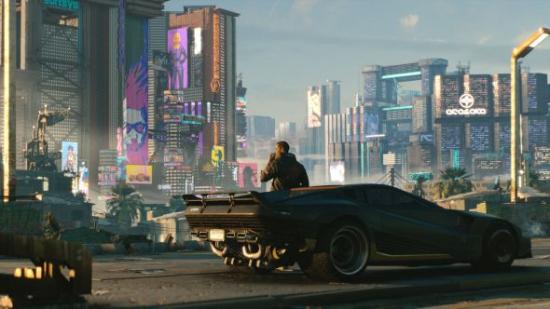You’re hungry for more Cyberpunk 2077 after it was exposed to the public for the first time in five years at E3 2018. You’re at the point that you could be convinced to jam a metallic slab into your arm, hook wires up to your brain, hack into a mainframe – anything if it means getting more info on this enormous sci-fi RPG. But you don’t need to go to such extreme measures.
Developer CD Projekt Red has promised to be more open about Cyberpunk 2077 since E3. That has certainly been the case. Due to the deluge of info, we now know it’ll be a first-person RPG, that it will have fluid classes, and that it’ll have hundreds of vehicles for you to ride around Night City in.
With Cyberpunk 2077, we are probably looking at one of the best RPGs on PC.
But there’s still so much to learn about this enormous sci-fi RPG. Fortunately, it hasn’t come out of nowhere. In fact, Cyberpunk 2077 is not only derived from a 30-year-old board game – Cyberpunk 2020 – it emerges from a sub-genre of sci-fi that is even older than that.
There’s a library’s worth of cyberpunk media for you to feast on if you really want to prep yourself for CD Projekt Red’s RPG, then. But not all of it is worth your time. That’s why we’ve put together this cyberpunk primer, full of books, films, music, games, and more to check out ahead of that Cyberpunk 2077 release date.
Books
Mirrorshades: You might as well start at the beginning. Cyberpunk emerged from the Mirrorshades Group, which was a collective of writers who were fed up of sci-fi literary traditions, and wanted the genre to keep up with the times. Fed up with stories about space and the cosmos – it had been years since the moon landing – they explored the fusion of technology with the self, looking into what it means to be human. In Mirrorshades, editor Bruce Sterling gathers the Mirrorshades Group writers for a collection of short stories, exploring themes of body and mind invasion, whether by implanted circuitry, artificial intelligence, or genetic alteration.
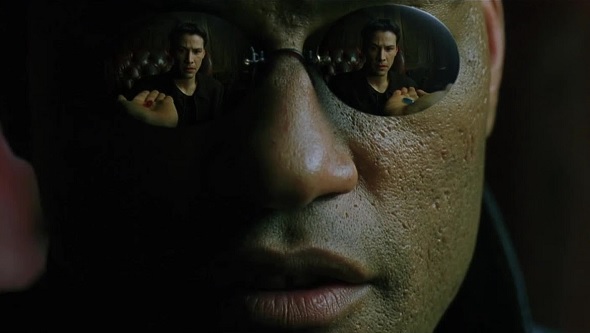
Do Androids Dream of Electric Sheep?: Of the many books Philip K. Dick wrote, it is probably this one that has stayed within the public consciousness for the longest. His tale of Deckard, a bounty hunter who kills androids for credit – and who, by its end, finds empathy for his robotic targets – has reverberated across sci-fi for years. Not least because the was story adapted into Blade Runner, but also because Dick’s themes have only become more relevant as our machine sisters become more integral to our lives.
Neuromancer: Many attribute William Gibson with giving cyberpunk its texture and no one of his books is more responsible for that than Neuromancer. In fact, what the book is most famous for is Gibson’s coining of the term ‘cyberspace’. The story itself follows Case, a talented hacker, as he is hired for one last job to take down a powerful AI. It takes place in a futuristic Japanese city, is peppered with drug use and criminals, and will make you question whether one day it’ll be possible to upload a person’s consciousness to a computer.
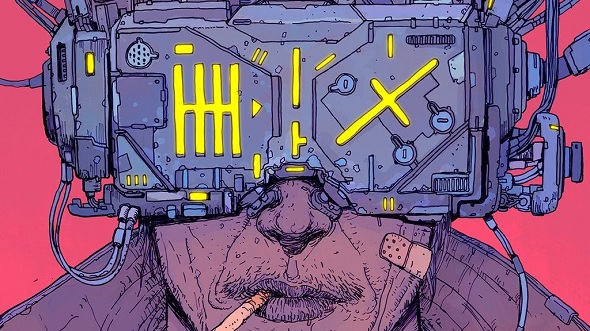
Snow Crash: Snow Crash falls within the questionable category of ‘post-cyberpunk’. It brings a programmer’s eye to the corrupt tech-futures the genre has, even by the time of its publication in 1992, become known for. It’s among the most accomplished visions of cyberpunk as a virtual reality – coined the term ‘Metaverse’ – where corporations and criminals have franchised the entirety of cyberspace, cramming it with ads, and turning the ownership of virtual space and avatars into symbols of social status. It’s a thrilling read and delivers all of the cyberpunk iconography you could wish for.
Films
Blade Runner: Probably the most famous piece of cyberpunk media, Blade Runner is most known for its depiction of Los Angeles in 2019: neon lights against a dark sky, animated billboards hung across skyscrapers, rain-soaked multicultural streets. The story is taken straight out of Do Androids Dream of Electric Sheep? but omits some of the stronger motifs – most notably, the robot animals (though, nods like Tyrell’s owl remain) – but makes up for it with those slow, noir-driven shots of the future city that has given the genre its recognisable iconography.
Akira: Also set in 2019, but this time in Neo-Tokyo, Akira is among the most accomplished visualisations of the cyberpunk aesthetic, period. It follows a gang of disaffected teens as they ride around the city on motorcycles looking for trouble. The shots of the city, of the vast cathedrals of technology, spoiled with the kind of lighting and colours only possible with animation, make it a work of art. But inside all of this is a story of a man becoming a machine, literally replacing limbs with shafts and wires, having us question where we draw the line between human and machine.
The Matrix: Bullet time, plug-in humans, and giant leather coats. The Matrix is known for all of these, and it will all feature in Cyberpunk 2077, it being a game that gorges in style – whether shooting up a corporate office, or slumming it in the subway addicted to drugs, you’ve gotta look good. The Matrix also made many of cyberpunk’s bigger ideas mainstream: the human-machine divide, what qualifies as reality, and whether or not it’s ok to wear sunglasses indoors.
Existenz: Cyberpunk is all about outfitting your body with tech. We see it everywhere but the film that really dives into that idea is Existenz – so much so that some people call it biopunk. In its world, there are ‘game pods’ that can be plugged into your body for the ultimate in virtual reality gaming. The installation process is as gross as you’d expect from a David Cronenberg film – writhing flesh, spine rips, alien-like bulges. But, more importantly, Existenz will make you question the reality around you. It’ll make you think twice before you start augmenting your character in Cyberpunk 2077.
Games
Cyberpunk 2020:By far the best way to get accustomed to everything Cyberpunk 2077 is to play the tabletop game that it pulls from. Its take on cyberpunk is to prioritise style over substance – meaning that fashion and cybernetic modification rule over everything else. Its best mechanic is in how you can cheat its skill-based system by installing cyber technology, but that comes at the cost of losing humanity. Through this the game drills into the central concern of the cyberpunk genre. It’s also worth getting to know everything you can about Braindance, the drug that lets you experience other people’s experiences as if you were them, as it will almost certainly be a big part of Cyberpunk 2077.
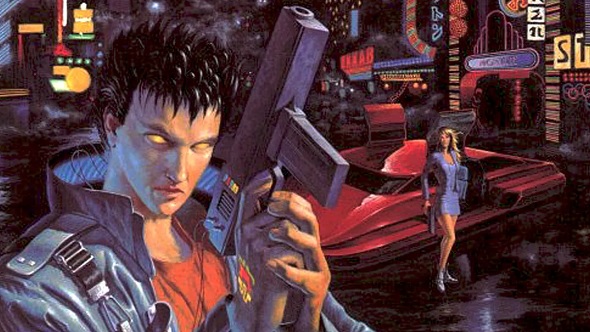
Deus Ex: Play the first, or play the sequels if you want, either way you’re getting a game that turns cyberpunk mainstays into game mechanics. You can augment the nanotechnology inside protagonist JC Denton (or Adam Jensen in the more recent games) to unlock superhuman abilities. Microfibral muscle lets you lift heavy objects and open up new passageways. Aqualung lets you hold your breath for longer underwater. Vision enhancement lets you see in the dark so as to better sneak up on your enemies. The first game is so adored due to how it lets you tackle each mission from a variety of angles, each of which play into the strengths and weaknesses of your augmentations – you’ve just got to decide on your playstyle.
Shadowrun: Realised as a tabletop game, videogames, and about a million novels, Shadowrun takes you to a pretty typical cyberpunk world – one of corporate dystopia, computer hacking, and virtual space. But it also, somewhat bizarrely, fuses all of that sci-fi with classic fantasy elements. We’re talking dragons, elves, orcs, the lot. You can play the videogames to get an idea of how CD Projekt Red might borrow from its tabletop source material to make a modern cyberpunk RPG – they’re also brilliant games in their own right.
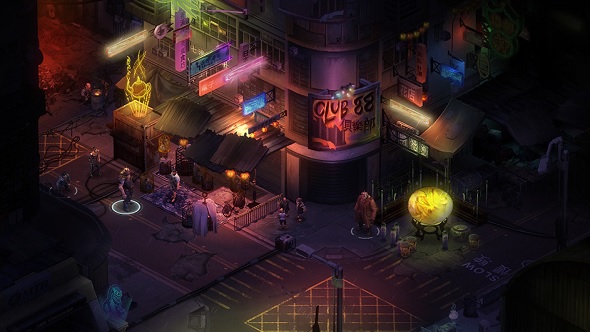
Watch Dogs 2:While it’s not immediately cyberpunk, Watch Dogs 2 offers a glimpse into the future of the genre. The game follows a bunch of young hacktivists as they attempt to bring down the surveillance systems being used to control and criminalise the population of San Francisco. It’s better than the first game in many ways but it’s the energy of its characters and their story that make it stand out. Cyberpunk doesn’t always have to be rain-drenched streets and dark cityscapes.
TV
Mr. Robot: Hacktivists are big in modern cyberpunk and Mr. Robot is one of the faces of that trend. What we encounter in Mr. Robot is a fusion of cyberpunk with the problems of the present – we are living in the disjointed future that the media of the ‘80s predicted. The series follows a hacker with social anxiety as he works with a group to reduce consumer debt by bringing down one of the biggest corporations in the world. It’s a story that could easily happen today and gives us an idea of what direction cyberpunk is going in as a whole.
Black Mirror: If cyberpunk is all about worrying how technology will affect us as we continue to integrate it into our lives then Black Mirror qualifies. It’s dark, biting satire looks into the near-future, where people replace dead lovers with robot clones, and others get stuck inside nightmarish virtual realities. It’s an award-winning series that is at its best when it appeals to your empathy and then cruelly slaps you about the face with a shocking tech-led revelation.
Cowboy Bebop: The future is cool. This is a sentiment shared by both Cyberpunk 2077 and Cowboy Bebop. While CD Projekt Red’s RPG is influenced by the glam and rockers of the ‘80s, Cowboy Bebop riffs on the ‘90s Japanese cool and the increasing loneliness brought on by the rise of the internet. It follows the bounty hunter crew of the Bebop as they struggle to earn enough cash to feed themselves while also coming to terms with their haunting pasts. Its fusion of sci-fi noir, jazz, and exaggerated animation make it as fresh today as when it came out in 1998.
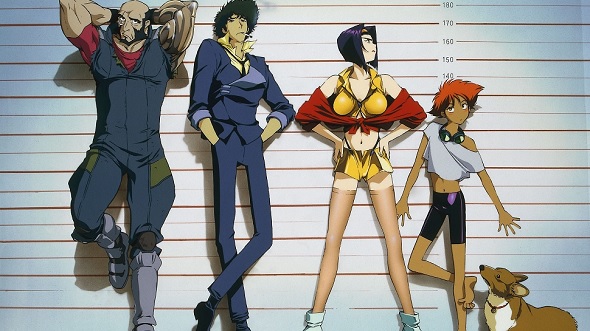
Altered Carbon: Human consciousness can be uploaded to storage devices and mass produced. This is the world that Altered Carbon takes place in, exploring what it means to be human when your memories and personality can be manufactured and installed into another body, flesh or synthetic. It’s a looker, that’s for sure, giving you the kind of visual cyberpunk feast you’d expect from 2018, but its central murder mystery fizzles out pretty fast. Still, this is a new series and may find its feet yet again. If nothing else it’ll give you a good idea of the current state of cyberpunk media.
Music
Vangelis:
Blondie:
Kraftwerk:
Gesaffelstein:
Comics
2000 AD:When Cyberpunk 2077’s first teaser came out back in 2013 a number of people placed their hopes on playing the cop who held the gun to the head of the cybernetic woman. If you’re looking for an experience as a cop patrolling a cyberpunk city then you need only turn to the Judge Dredd stories. Dredd arrests, sentences, and executes the seedy criminals that operate in the gigantic future metropolis Mega-City One. This is one of the most fascinating cities in fiction; a conurbation so large that it requires Judges to police it. Expect to see plenty of lowlifes beaten into the asphalt against a towering grey backdrop.
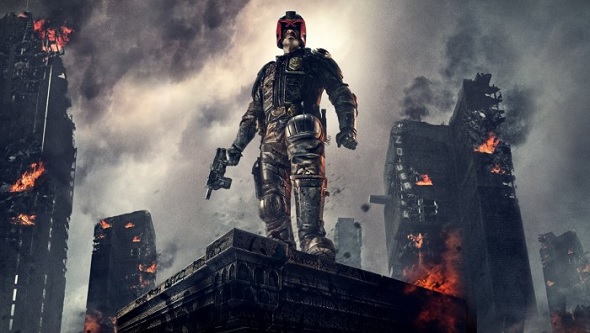
Transmetropolitan: The City is a megalopolis of political lunacy and chemical-injecting criminals. Inside this dysfunctional cesspool, which has grown with the rise of hyper-tech, gonzo journalist Spider Jerusalem takes snapshots with his asymmetrical sunglasses, capturing the bizarre, corrupt, and violent goings-on of one of the most fascinating cyberpunk cultures ever created. If you want a glimpse of how wild Cyberpunk 2077’s streetside filth and arching character stories could be then this is the comic series to read. It’s an aggressive investigation of how technology could pervert humanity and one as memorable as writer Warren Ellis’ inventive expletives.
The Long Tomorrow:The vertical, bustling cities of cyberpunk partially find their roots in this short comic series illustrated by Moebius. It’s a hard boiled sci-fi story that William Gibson has said influenced Neuromancer and Ridley Scott referenced when creating the look of Blade Runner. Gaze into the pages of The Long Tomorrow and you’ll see vast megastructures filled with life, detailed like cathedrals made to worship circuitry, flying traffic whizzing in the gaps between the towers. Cyberpunk 2077 will no doubt be another piece of media that pulls heavily from the imagery found in this series.
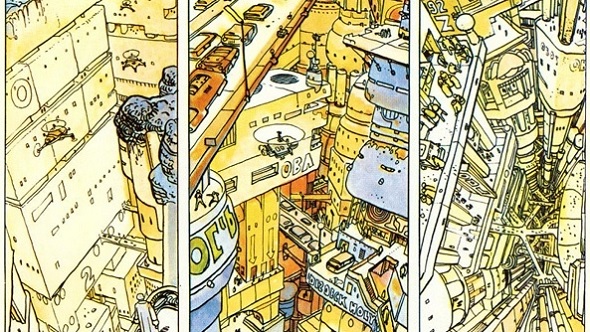
Ghost in the Shell: You couldwatch the film (not the Hollywood one, please) but you shouldread the manga that came before it. The reason being that you get writer Masamune Shirow’s detailed notes on how his transhumanist future works. You probably haven’t thought about whether cyborgs eat food or not, but Shirow gives it a lot of thought, detailing how the technology was developed over years to mimic human behaviour. That’s just the start of it. Oh, and the Ghost in the Shell story is one of the classics of cyberpunk: it follows a cyborg officer as she hunts down a criminal who is hacking into humans with cyberbrains.
